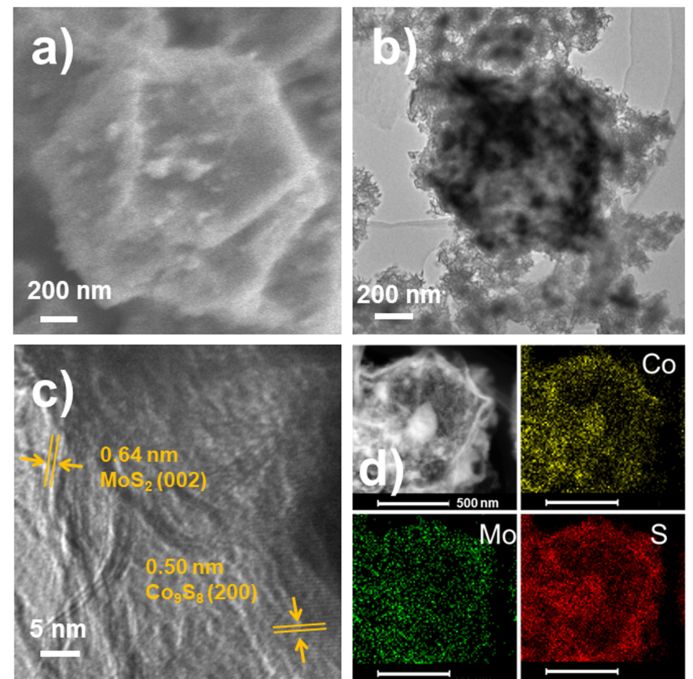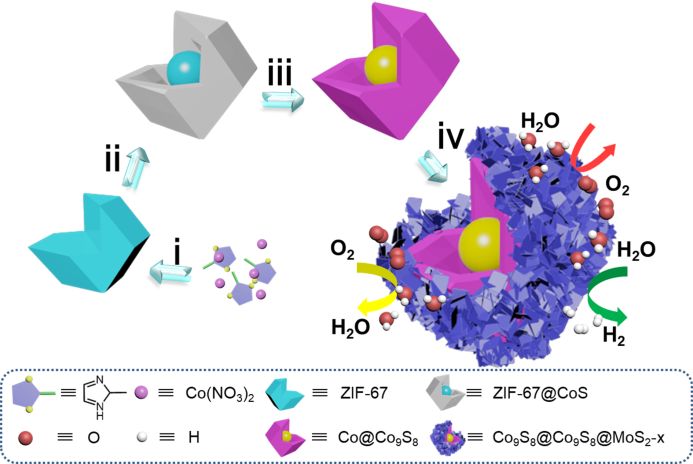
hotline:
17715390137
Tel/Wechat:
18101240246 (Technology)
0512-68565571
Email:mxenes@163.com (Sales Engineer)bkxc.bonnie@gmail.com
Scan the code to follow or search the official account on WeChat:
2D Materials Fronrier After paying attention,
click on the lower right corner to contact us,
Enter enterprise WeChat.
Professional Services Online

 ORR (oxygen reduction reaction), OER (oxygen evolution reaction) and HER (hydrogen evolution reaction) are three key reactions involved in new energy technologies such as metal-air batteries, electrocatalytic water decomposition devices, etc., but due to their slow reaction kinetics, the reactions High overpotentials are usually required to drive. Therefore, it is very important and very challenging to build an efficient three-function electrocatalyst for HER, OER and ORR. Among many compounds, MoS₂ is a promising HER electrocatalyst, but its poor conductivity and strong agglomeration during the preparation process have severely restricted its catalytic effect. In contrast, Co₉S₈ has attracted wide attention due to its relatively low electrical conductivity and good OER electrocatalytic performance. Although these two compounds have their own advantages, they are limited by a single catalytic function, and it is difficult to expand their application range. An effective synthesis strategy is urgently needed, which can combine the unique advantages of each component to create a rich interface and shorten the ion diffusion path. And reduce the interface contact resistance, thereby building a multifunctional nanocatalyst with high catalytic activity. The development and construction of this new type of nanostructure and the development of multifunctional electrocatalysts are of great significance, but also very challenging.
ORR (oxygen reduction reaction), OER (oxygen evolution reaction) and HER (hydrogen evolution reaction) are three key reactions involved in new energy technologies such as metal-air batteries, electrocatalytic water decomposition devices, etc., but due to their slow reaction kinetics, the reactions High overpotentials are usually required to drive. Therefore, it is very important and very challenging to build an efficient three-function electrocatalyst for HER, OER and ORR. Among many compounds, MoS₂ is a promising HER electrocatalyst, but its poor conductivity and strong agglomeration during the preparation process have severely restricted its catalytic effect. In contrast, Co₉S₈ has attracted wide attention due to its relatively low electrical conductivity and good OER electrocatalytic performance. Although these two compounds have their own advantages, they are limited by a single catalytic function, and it is difficult to expand their application range. An effective synthesis strategy is urgently needed, which can combine the unique advantages of each component to create a rich interface and shorten the ion diffusion path. And reduce the interface contact resistance, thereby building a multifunctional nanocatalyst with high catalytic activity. The development and construction of this new type of nanostructure and the development of multifunctional electrocatalysts are of great significance, but also very challenging.
Recently, the research group of Professor Li Liping from the State Key Laboratory of Inorganic Synthesis and Preparation of Jilin University successfully used the metal-organic framework ZIF-67 as a precursor to successfully prepare a unique core-double shell nanostructured compound Co₉S₈ @ Co₉S₈ @ MoS₂-0.5. The unique synthesis strategy not only enables the nanostructures to inherit the complete morphology of the precursors, but also produces a rich interface to effectively regulate the electronic structure of each component. Co₉S₈ @ Co₉S₈ @ MoS₂-0.5, which has a novel core-double shell nanostructure, shows excellent HER, OER, and ORR electrocatalytic activity.





| Reminder: Beijing Beike New Material Technology Co., Ltd. supplies products only for scientific research, not for humans |
| All rights reserved © 2019 beijing beike new material Technology Co., Ltd 京ICP备16054715-2号 |